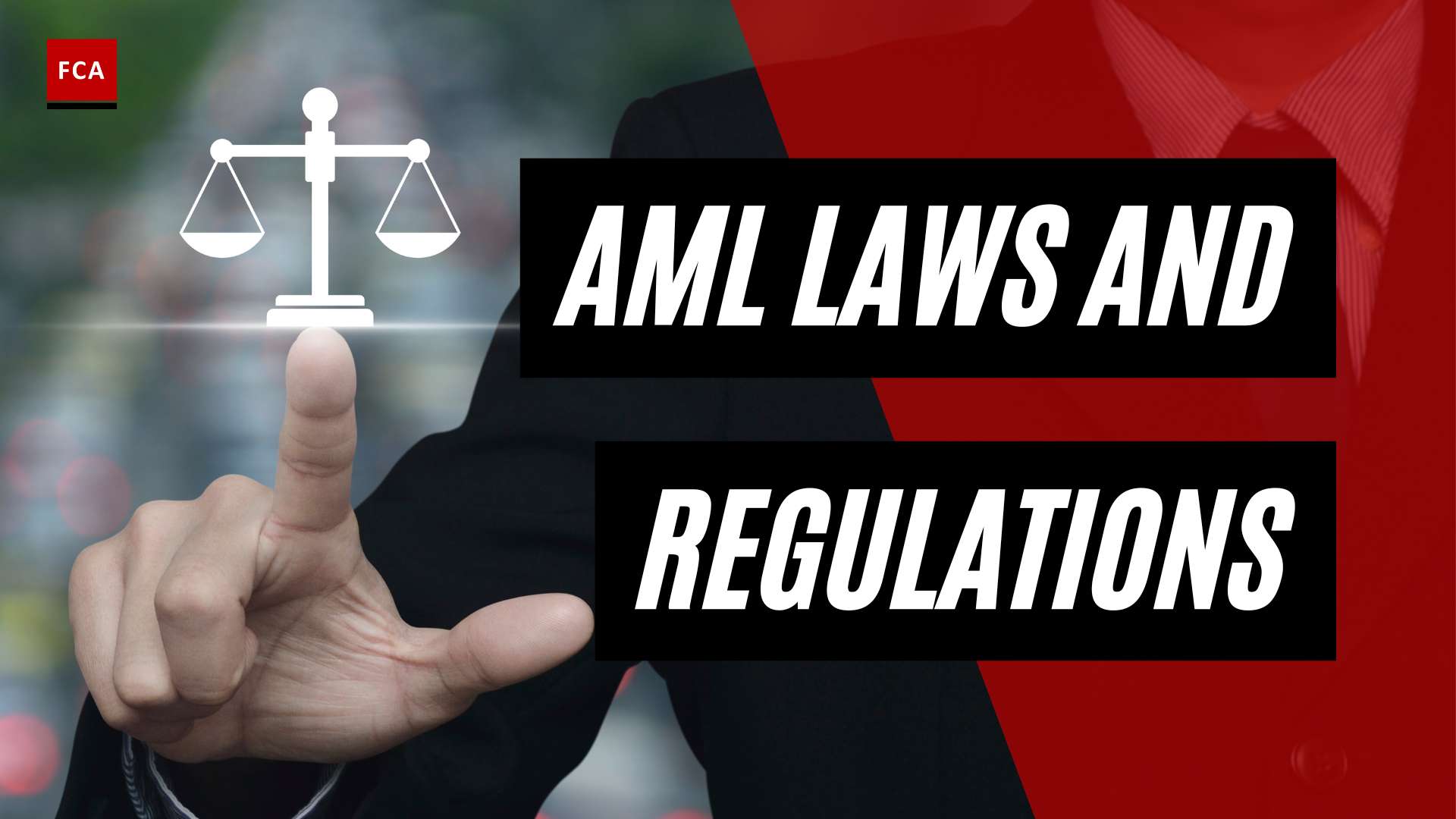Understanding AML Regulations
To effectively combat money laundering and the financing of illegal activities, Anti-Money Laundering (AML) regulations have been established. These regulations play a crucial role in safeguarding the integrity of financial systems and protecting businesses and individuals from the negative impacts of financial crime. In this section, we will explore the importance of AML regulations and their relationship with financial privacy.
The Importance of Anti-Money Laundering (AML) Regulations
AML regulations are designed to prevent criminals from disguising the origins of illicit funds and integrating them into the legitimate financial system. By implementing robust AML measures, governments and financial institutions can detect and deter money laundering activities, disrupting the financial networks that support criminal enterprises.
One of the primary objectives of AML regulations is to ensure that businesses, particularly those in the financial sector, implement appropriate measures to identify and mitigate the risks associated with money laundering. These measures include conducting customer due diligence (CDD) to verify the identity of customers, assessing the potential risks of money laundering, and reporting suspicious transactions and activities.
By complying with AML regulations, businesses not only protect themselves from potential legal and reputational risks but also contribute to the overall stability and integrity of the global financial system. AML compliance helps in maintaining transparency, preventing the misuse of financial systems for illicit purposes, and safeguarding the interests of customers and stakeholders.
AML Regulation and Financial Privacy
While AML regulations are vital for combating financial crime, there is an ongoing debate regarding the balance between AML efforts and individual financial privacy. AML regulations often require financial institutions to collect and analyze significant amounts of customer data to identify suspicious transactions and activities. This data collection can raise concerns about the privacy and confidentiality of individuals’ financial information.
However, it is important to note that AML regulations are designed to target and identify suspicious activities rather than intrude on individuals’ financial privacy without proper cause. Financial institutions are required to adhere to strict data protection and privacy laws to ensure the security and confidentiality of customer information.
Moreover, AML regulations incorporate strict guidelines on information sharing, allowing financial institutions to collaborate with law enforcement agencies and regulatory authorities in the reporting and investigation of suspicious activities. This collaboration is essential for effectively combating money laundering and other financial crimes.
To strike a balance between AML efforts and financial privacy, regulatory frameworks often include provisions that protect individuals’ rights while still enabling the detection and prevention of money laundering activities. Financial institutions are required to establish comprehensive AML compliance programs that incorporate appropriate data protection measures and ensure compliance with applicable privacy laws.
By maintaining a strong AML compliance program, businesses can fulfill their obligations under AML regulations while also prioritizing the security and privacy of their customers’ financial information.
Understanding AML regulations and their significance in combating money laundering is crucial for businesses operating in the financial sector. By adhering to these regulations, businesses can contribute to the global fight against financial crime while upholding the privacy and security of their customers’ financial information.
Suspicious Activity Reporting (SAR)
In the fight against financial crimes, Suspicious Activity Reporting (SAR) plays a crucial role in identifying and preventing fraudulent activities. This section will provide an overview of what SAR entails and its significance in fraud prevention.
What is Suspicious Activity Reporting?
Suspicious Activity Reporting (SAR) refers to the process of reporting any transactions or activities that may be deemed suspicious or potentially related to money laundering, terrorist financing, or other financial crimes. Financial institutions and businesses are required by law to monitor customer transactions and report any suspicious activities to the appropriate regulatory authorities.
SAR helps in the early detection of potentially illicit activities by enabling businesses to identify patterns, trends, or behaviors that deviate from normal customer activity. By maintaining a vigilant eye on financial transactions, businesses can play a vital role in safeguarding the integrity of the financial system.
Role of SAR in Fraud Prevention
SAR plays a critical role in preventing and combating fraud. By reporting suspicious activities promptly, businesses contribute to the collective effort of law enforcement and regulatory authorities in identifying and disrupting criminal activities. SAR acts as an early warning system, allowing authorities to investigate and take appropriate action to prevent further illicit activities.
The information provided in SARs helps law enforcement agencies and regulatory bodies to uncover complex financial networks, trace the flow of illicit funds, and identify individuals involved in fraudulent schemes. This collaboration between businesses and authorities is essential in combating fraud, money laundering, and other financial crimes.
Through SAR, businesses become an integral part of the larger anti-money laundering (AML) framework, contributing to the overall efforts in maintaining the integrity of the financial system. By fulfilling their reporting obligations, businesses not only protect themselves from potential risks but also contribute to the collective security of the financial community.
To establish an effective SAR program within businesses, it is important to understand the benefits and responsibilities associated with SAR reporting. The next section will delve into the benefits that SAR brings to businesses and the responsibilities that come with it.
Empowering Businesses with SAR
In the fight against financial crime and money laundering, businesses play a crucial role in detecting and reporting suspicious activities. Suspicious Activity Reporting (SAR) empowers businesses to contribute to the larger effort of fraud prevention and protection of the financial system. This section will explore the benefits of SAR for businesses and the responsibilities they hold in this process.
Benefits of SAR for Businesses
Implementing a robust SAR program provides several benefits for businesses. By actively monitoring and reporting suspicious activities, businesses can:
-
Mitigate Risks: SAR enables businesses to identify and report potential money laundering, fraud, or other illicit activities. By doing so, businesses can mitigate their exposure to these risks and protect their reputation.
-
Compliance with AML Regulations: SAR is a fundamental component of anti-money laundering (AML) compliance programs. By adhering to SAR requirements, businesses demonstrate their commitment to regulatory compliance and avoid potential penalties.
-
Contribute to the Financial System’s Integrity: SAR reporting helps maintain the integrity of the financial system by identifying and disrupting illicit financial activities. This collaborative effort among businesses, law enforcement, and regulatory authorities is crucial for combating financial crime.
-
Prevent Losses: The timely reporting of suspicious activities through SAR can help prevent financial losses. Identifying and reporting potential fraudulent transactions or money laundering attempts can save businesses from significant financial harm.
Responsibilities of Businesses in SAR
To effectively contribute to the SAR process, businesses have specific responsibilities. These include:
-
Awareness and Training: Businesses must ensure that their employees are aware of the importance of SAR and are trained to recognize and report suspicious activities. Ongoing training and education programs help employees understand their role in fraud prevention and maintain compliance with AML regulations.
-
Establishing Internal Policies and Procedures: Businesses should establish clear and comprehensive internal policies and procedures for SAR. These guidelines should outline the criteria for identifying and reporting suspicious activities, the process for escalating concerns, and the communication channels with law enforcement and regulatory authorities.
-
Utilizing Technology and Automation: Businesses can leverage technology and automation tools to enhance their SAR capabilities. Implementing advanced analytics and monitoring systems can help identify patterns, anomalies, and potential red flags associated with suspicious activities. This enables businesses to efficiently detect and report suspicious transactions.
-
Collaboration with Law Enforcement and Regulatory Authorities: Businesses should actively collaborate with law enforcement agencies and regulatory authorities in SAR efforts. This includes sharing relevant information, responding to requests for additional details, and providing ongoing support in investigations related to reported suspicious activities.
By embracing their role in SAR, businesses become integral partners in the fight against financial crime. Through their active participation and adherence to AML regulations, businesses contribute to a safer and more secure financial system.
Remember, SAR is just one aspect of an effective AML compliance program. To develop a comprehensive program, businesses should also consider other elements such as customer due diligence, AML risk assessment, beneficial ownership regulations, and the appointment of an AML compliance officer.
Implementing an Effective SAR Program
To effectively combat financial fraud and money laundering, businesses must establish a robust Suspicious Activity Reporting (SAR) program. Implementing such a program involves several essential components that enable businesses to identify and report suspicious activities promptly.
Establishing Internal Policies and Procedures
The first step towards implementing an effective SAR program is establishing clear and comprehensive internal policies and procedures. These guidelines define the framework for identifying, documenting, and reporting suspicious activities within the organization. The policies should align with applicable Anti-Money Laundering (AML) regulations and provide specific instructions on the types of activities that warrant SAR filing. By setting out these internal guidelines, businesses ensure consistency and standardization in their SAR efforts.
Training and Education for Employees
Training and education are crucial for empowering employees to play an active role in the SAR program. Businesses should provide regular training sessions to employees, especially those involved in customer-facing roles or with access to transactional data. Training should cover topics such as recognizing red flags, understanding AML regulations, and the process of filing SARs. By equipping employees with the necessary knowledge and skills, businesses enhance their ability to detect and report suspicious activities effectively.
Utilizing Technology and Automation
Utilizing technology and automation can significantly enhance the efficiency and accuracy of SAR programs. AML compliance software can assist businesses in monitoring transactions, identifying patterns, and detecting anomalies that may indicate suspicious activity. These tools can streamline the SAR filing process, ensuring consistency and adherence to regulatory requirements. By leveraging technology, businesses can reduce the manual effort required for SAR reporting, allowing compliance teams to focus on analysis and investigation.
Moreover, businesses should consider implementing transaction monitoring systems that employ advanced analytics and machine learning algorithms. These systems can analyze vast amounts of data in real-time, flagging potentially suspicious transactions for further investigation. By incorporating technology and automation, businesses can strengthen their ability to identify and report suspicious activities promptly.
By implementing internal policies and procedures, providing comprehensive training and education, and utilizing technology and automation, businesses can establish an effective SAR program. This program enables organizations to proactively identify and report suspicious activities, contributing to the overall efforts in combating financial fraud and money laundering. For more information on AML compliance and related topics, visit our articles on anti-money laundering compliance and customer due diligence.
Collaboration and Reporting
To effectively combat fraud and money laundering, collaboration between businesses and law enforcement or regulatory authorities is essential. This section focuses on the importance of collaboration and the process of submitting Suspicious Activity Reports (SARs) while maintaining confidentiality.
Collaboration with Law Enforcement and Regulatory Authorities
Collaboration between businesses, law enforcement agencies, and regulatory authorities is crucial in the fight against financial crimes. By sharing information and working together, these entities can enhance their collective efforts to identify and prevent suspicious activities.
Law enforcement agencies play a vital role in investigating and prosecuting financial crimes. They rely on the reports and information provided by businesses to identify potential criminal activities, build cases, and take appropriate legal action. Collaborating with law enforcement agencies can help businesses contribute to the broader effort of combating fraud and money laundering.
Similarly, regulatory authorities, such as financial intelligence units and supervisory bodies, work to enforce anti-money laundering (AML) regulations and ensure compliance by businesses. These authorities provide guidance, oversight, and support to businesses in their AML efforts. Collaborating with regulatory authorities enables businesses to stay updated with the latest regulatory requirements and receive guidance on best practices.
Submitting SARs and Maintaining Confidentiality
Submitting Suspicious Activity Reports (SARs) is a crucial part of the suspicious activity reporting process. SARs are detailed reports that businesses are required to file when they encounter transactions or activities that raise suspicions of money laundering or other financial crimes.
When submitting SARs, businesses must ensure the accuracy and completeness of the information provided. SARs typically include details about the suspicious activity, such as the individuals or entities involved, the nature of the activity, and supporting documentation or evidence. By providing comprehensive and detailed information, businesses assist law enforcement and regulatory authorities in their investigations.
Confidentiality is a vital aspect of the SAR process. Businesses must maintain the confidentiality of the SARs they submit and the related information. This helps protect the integrity of the investigation and prevents potential tipping off of the individuals or entities involved in the suspicious activity. Breaching confidentiality can compromise the effectiveness of law enforcement efforts and hinder the detection and prevention of financial crimes.
By collaborating with law enforcement and regulatory authorities and submitting SARs while maintaining confidentiality, businesses can actively contribute to the fight against fraud and money laundering. It is essential for businesses to understand their responsibilities in reporting suspicious activities and to work closely with relevant authorities to ensure a safe and secure financial environment.
For more information on anti-money laundering compliance and the reporting process, refer to our articles on anti-money laundering compliance and suspicious activity reporting.









